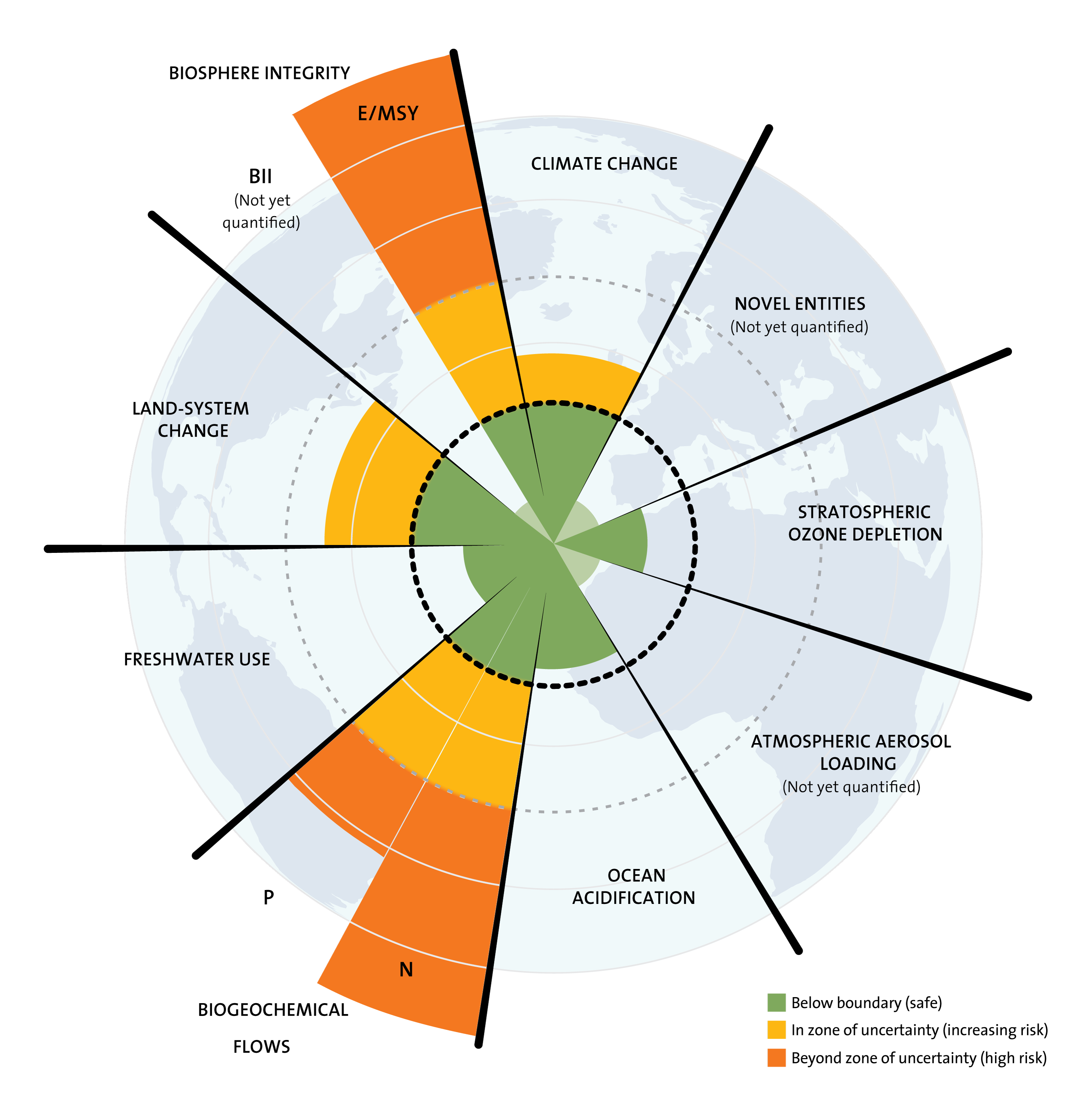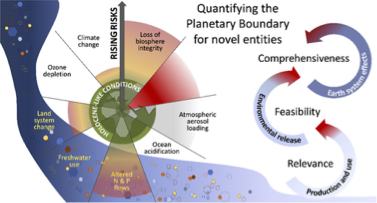There is a very real chance that the current era, now known as the Anthropocene, will end badly for humans and many other species. The “polycrisis,” as it is now being called, is a consequence of our having transgressed, as a species, a majority of the key ecological boundaries of our planet. Here’s an early accounting of these boundaries:

And here’s a more recent one, showing the rising risks of the loss of biosphere integrity:

What this means is that we could lose our atmosphere, much like Mars, or that it could change composition in such a way as to make the planet uninhabitable; that the water cycle or the pollinator population or the climate could be so severely disrupted as to make growing enough food for eight billion people no longer possible; or that humans succeed in poisoning the environment with toxic materials that the web of life as we know it is broken.
Humanity has, frankly, a slim chance of surviving. But if the species does continue, what might the future look like? This is the focus of this book, and it’s a subject many of us have been thinking about for most of our lives so far. As someone born at the end of the Second World War, I grew up understanding that the world might be annihilated by nuclear weapons at any moment, and indeed it seems this outcome is likelier than not. But still, this outcome was not, and is not, inevitable, since it is a matter of human choice. If, as we all hoped, cooler heads could prevail, we might still have a chance at a “normal” life.
But by the time I graduated from university, in 1969, it had already become clear to me and to many others that just continuing along the present path was not an option.